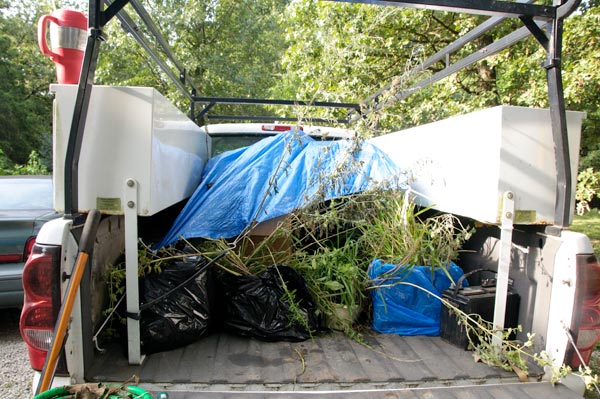
The peak of summer is the worst time for transplanting perennials. If you’re even thinking about moving those flowers, herbs, or shrubs this month, take my advice and wait. Really.
Unless, of course, it’s a life or death situation.
That’s how I ended up digging out and moving a pickup load of perennial flowers and herbs 150 miles south during the hottest week so far this summer. The area was being cleared for work around the building, and the plants had to go. I happened to be on site for the weekend, with a pickup truck for hauling and places I could happily transplant these orphaned perennials should they survive the trauma of a summer move.
Under such circumstances, the best option is to dig early in the morning while the air is still relatively cool. The digger will fare better, and so will the plants. Dig out as large a dirt ball as possible around the roots. Pot up whatever will fit in pots. Use trash cans, trash bags, and plastic lined boxes and crates for the bigger root balls. Some plants do better if the foliage is kept intact, and some experience less transplant stress if trimmed back for a move . (We moved our herbs and daylilies without trimming but would have cut back ornamental grasses and bearded irises. Anything else we’d probably have to look up in one of the garden guides to know which treatment to choose since we’re not in the habit of torturing perennials with out-of-season moves.)
Keep the root balls moist, but not soggy. Provide shade and shelter from the wind until the plants are safely settled in their new spot — and take extra care on these points during the move itself.
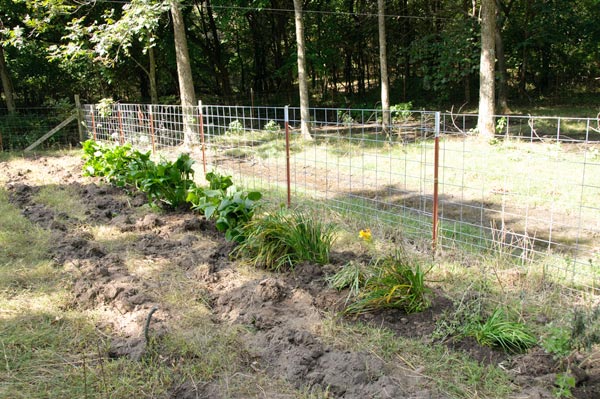
Since the new permanent planting spots aren’t ready yet, I heeled in all the perennials in a row at the bottom of the garden where the soil is decent and the row is shaded much of the day. Potatoes grew there earlier in the season, and that spot has been left fallow since the crop was dug.
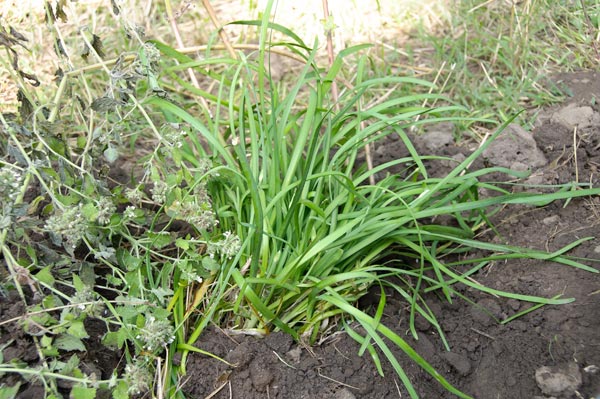
There are a couple clumps of catnip, and the grassy, garlic-smelling leaves of a clump of garlic chives.
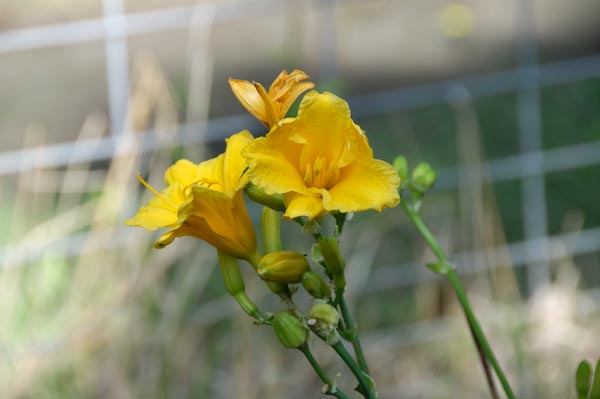
The Stella d’Oro daylilies survived the move with blossoms intact. Whether they’ll continue to thrive is a question yet to be answered.
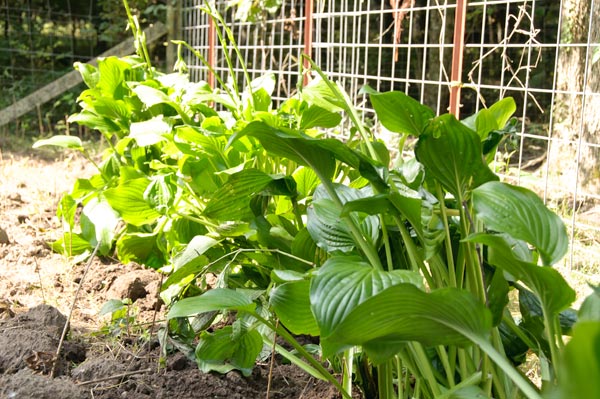
These hostas seem to be the toughest of the bunch. Through the years, I’ve moved quite a few of this particular type from one spot to another, under a wide range of circumstances. Each time, they’ve thrived and multiplied. Fingers crossed this batch will thrive as well.



Hostas! Love em!
We brought some from AL to cold MN – they are thriving like everything – we now have 90 degree heat to let them remember what it was like back in Hot Alabama
They must love our MN weather – from one large clump they are around the north side of our home, plus have dug up some to give away.
Love em!
Hello, I like your article. This is a cool site and I wanted to post a little note to let you know, good job!
Thanks for sharing it!~